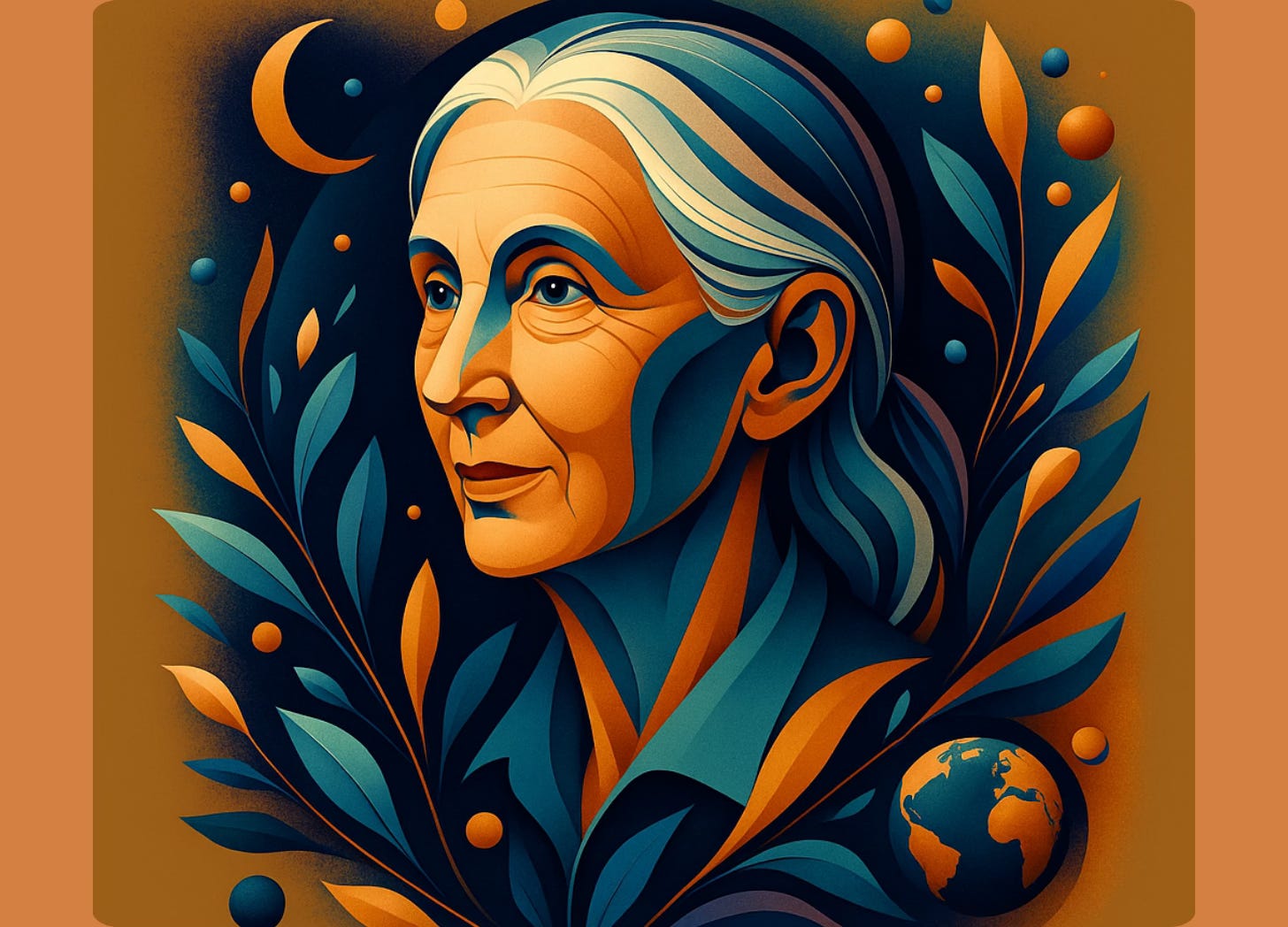The Power of Naming
A Mythic Tribute to Jane Goodall

Do you remember naming your first pet?
I do. Juliette was my first cat. A pregnant calico wandered into the yard of our new farmhouse in Northeastern Ohio. I found her. Offered her a slice of bologna. Named her. And then, as any five-yea…
Keep reading with a 7-day free trial
Subscribe to The Signal & The Spiral to keep reading this post and get 7 days of free access to the full post archives.


